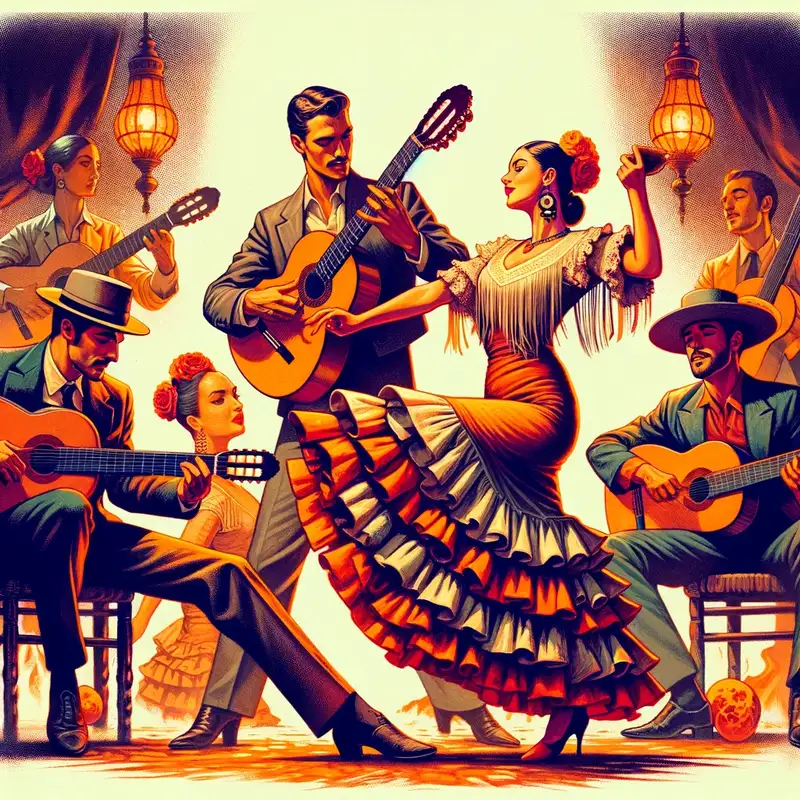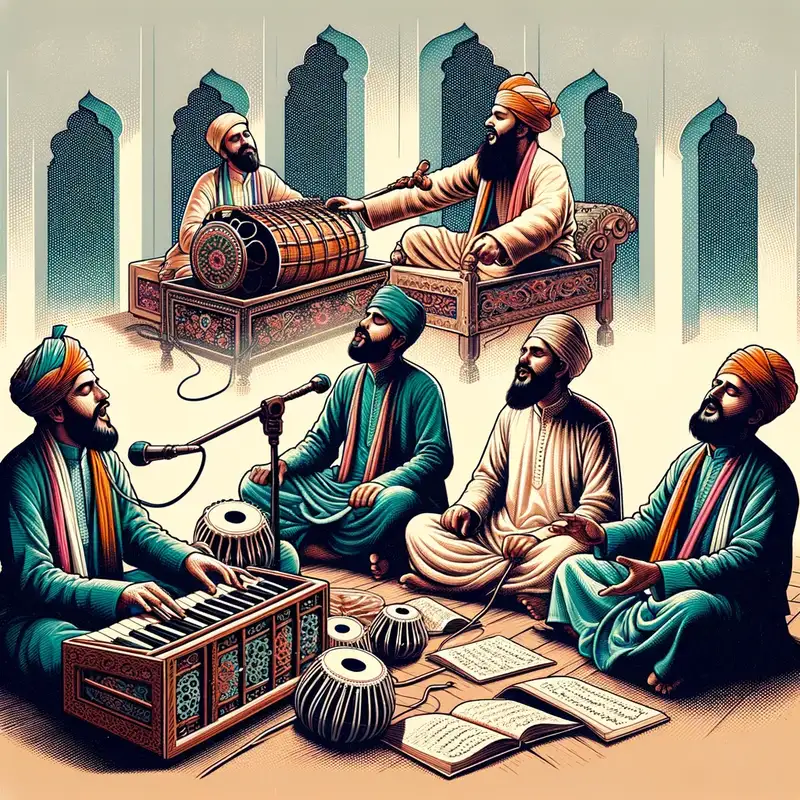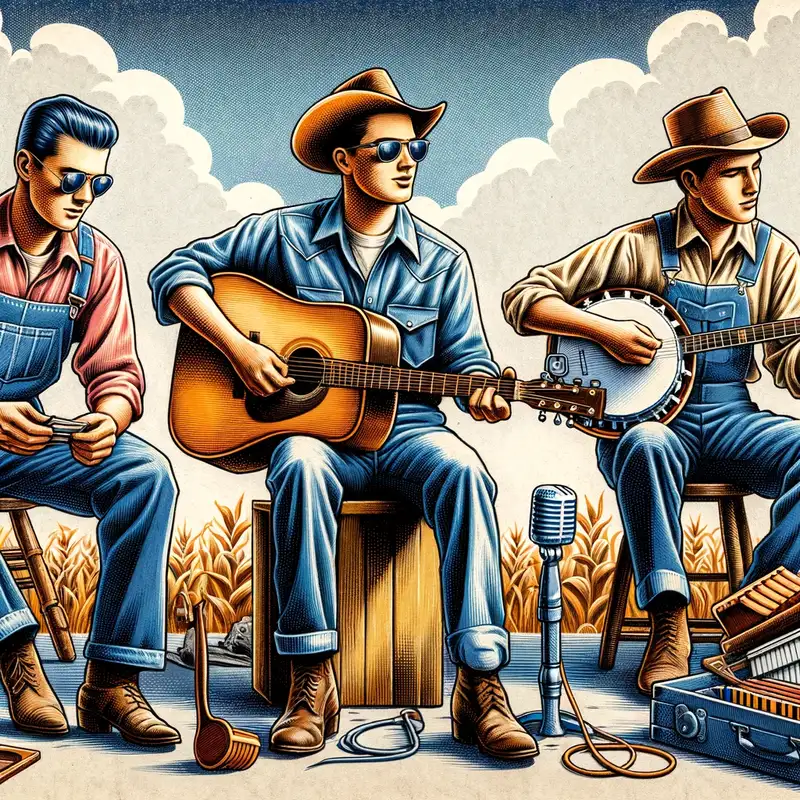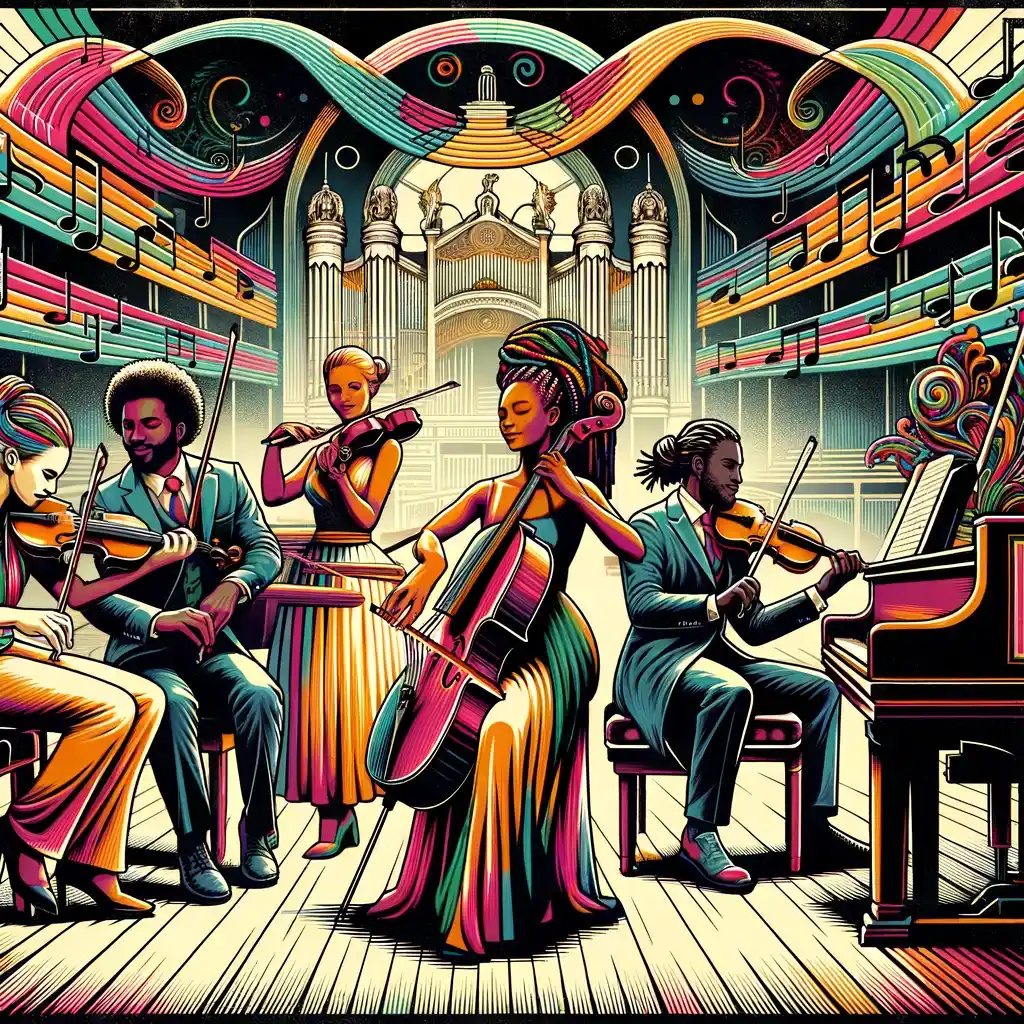Traditional World Music
In its simplest form, World Music is a suitcase term for traditional music from cultures around the globe.
Table of Contents
Distinctive Features
- Africa: Home to soul-shaking drums and powerful vocals; from the rhythmic beats of Djembe drums in West Africa to the hypnotic Gnawa music of Morocco.
- Asia: It’s a continent that offers an array of sounds: delicate strums of the Chinese guzheng, the harmonious sitar in India, or the ethereal sounds of the Japanese koto.
- Latin America: Feel the passion with sambas from Brazil, Andean pan flutes, and mariachi bands of Mexico.
- Oceania: The lands rich in tradition and history: hauntingly beautiful sounds of the didgeridoo from Down Under or the traditional Maori haka.
- Europe: The soulful Fado songs from Portugal, energetic Flamenco of Spain, and the heart-pounding beats of Eastern European Gypsy music.
Traditional Musical Styles
- Flamenco (Spain)
Vibe: Intense, passionate, and downright fiery!
Listen for: Fast-paced guitar strumming, intricate footwork, and raw, emotional vocals.
Fun Fact: Flamenco isn’t just music; it’s a combo of singing (cante), dancing (baile), and guitar playing (toque).
- Qawwali (South Asia)
Vibe: Spiritual and trance-like.
Listen for: Harmonium melodies, powerful vocals, and rhythmic handclaps.
Legends: Nusrat Fateh Ali Khan.
- Reggae (Jamaica)
Vibe: Chill, laid-back, and socially conscious.
Listen for: Steady rhythm, off-beat guitar chords, and lyrics often touching on love, peace, and resistance.
Icon: Bob Marley.
- Gamelan (Indonesia, especially Bali & Java)
Vibe: Ethereal, ceremonial, and kind of like the OG wind chimes.
Listen for: Metallophones, gongs, and bamboo flutes creating layered, intricate melodies.
- Samba (Brazil)
Vibe: It’s all about joy, energy, and rhythm.
Listen for: Powerful percussion, choruses that everyone joins in on, and that unstoppable beat that’ll make you move.
- Taarab (East African Coast, especially Zanzibar)
Vibe: A rich blend of Middle Eastern and African sounds that’s all about poetic lyrics.
Listen for: Harmonium, oud (a lute-type instrument), and soothing vocals.
- Klezmer (Eastern Europe)
Vibe: Jewish jazz with a side of feels.
Listen for: The wailing clarinet, violin, and lively accordion that will either make you want to dance or tear up. This style had a huge revival in the U.S. in the ‘70s and ‘80s!
- Afrobeats (West Africa, especially Nigeria)
Vibe: Infectiously rhythmic and modern.
Listen for: Funky basslines, jazzy horns, and a mix of traditional African instruments with Western ones.
Artists: Fela Kuti is the granddaddy of Afrobeats. His jams are legendary.
- Fado (Portugal)
Vibe: Deeply melancholic and soulful; it’s the blues of Portugal.
Listen for: Guttural vocals accompanied by the mournful sounds of the Portuguese guitar.
Cool tidbit: Fado means ‘fate’ in Portuguese, and many songs are about the sea or the life of the poor.
- Bhangra (Punjab, India)
Vibe: High-energy and celebratory; it’s the soundtrack to many Punjabi weddings and harvest festivals.
Listen for: The dhol drum setting the beat, and vocals that range from shouts to intricate melodies.
Today: Modern Bhangra often fuses with Western pop, giving some epic dance tracks!
- Mariachi (Mexico)
Vibe: Passionate and festive; it’s not a real fiesta without a Mariachi band.
Listen for: Violins, trumpets, and guitars, all accompanying heartfelt serenades.
Fashion: Ornate charro suits.
- Cumbia (Colombia)
Vibe: Hypnotic beats mixed with indigenous and African sounds.
Listen for: The pull of the accordion, the beat of the caja vallenata (drum), and swaying rhythms.
Today: Today’s cumbia has lots of sub-genres, from electronic fusions to psychedelic takes!
- Kabuki (Japan)
Vibe: Traditional theater music that’s dramatic AF.
Listen for: The unique blend of vocals, shamisen (a three-stringed instrument), and intense percussion.
Visual: Makeup and costumes.
- Rai (Algeria)
Vibe: Edgy, rebellious and oh-so soulful.
Listen for: Synths and electric guitars mixed with traditional North African rhythms.
Lyrics: Rai often touches on taboo topics and has been the voice of resistance for many.
- Highland Bagpipes (Scotland)
Vibe: Majestic, proud, and a bit mournful.
Listen for: Drone of the bagpipes.
Jam: It’s not just for parades or funerals. Contemporary pipers are blending rock, jazz, and more.
- Ghazal (Persian, Indian & Pakistani traditions)
Vibe: Melodic poetry.
Listen for: Slow tempo, soulful singing, and themes of love and pain.
Lyrics: A ghazal isn’t just a song genre; it’s a poetic form too.
- Tuvan Throat Singing (Mongolia & Tuva)
Vibe: Deep, resonant, and kinda otherworldly.
Listen for: The ability of singers to produce multiple notes simultaneously.
Fact: Many songs mimic the sounds of winds, rivers, and animals.
- Bossa Nova (Brazil)
Vibe: Smooth, breezy, beach vibes with a touch of jazz.
Listen for: Silky guitar strums, soft percussion, and chilled-out vocals.
Chill Out: Great background music for coffee shops or lazy Sundays.
- Didgeridoo Sounds (Australia)
Vibe: Ancient, haunting, and resonating from the Aussie outback.
Listen for: Deep, droning notes from the iconic long wooden instrument.
Fact: Traditionally, it’s an instrument of the Indigenous Australians from Northern Australia.
- Makossa (Cameroon)
Vibe: Afrobeat’s cousin with jazzy undertones.
Listen for: Catchy guitar licks, punchy brass sections, and foot-tapping rhythms.
Fun Fact: Ever heard of Michael Jackson’s “Wanna Be Startin’ Somethin'”? It’s got a Makossa-inspired chorus.
- Polka (Central Europe)
Vibe: Fast-paced, accordion-fueled dance music.
Listen for: Accordion, tuba, clarinet, and a beat that just won’t quit.
Fun Fact: It got its name from the Czech word “polka”, meaning “little woman”.
- Chanson (France)
Vibe: Poetic, often melancholic, and deeply expressive.
Listen for: Storytelling lyrics that delve into love, society, and the human experience.
Icons: Edith Piaf is a legend in this genre.
- Maloya (Réunion Island)
Vibe: A blend of slave chants and rhythms from the Indian Ocean island.
Listen for: Percussions like the rouler and kayamb, mixed with passionate call-and-response vocals.
Fact: It was once banned because of its association with Creole culture and rebellion.
- Saeta (Spain)
Vibe: Sacred, mournful, and deeply spiritual.
Listen for: Solo a cappella vocals. It’s mostly heard during Holy Week in Spain.
Fact: It’s an ancient Iberian liturgical chant, and listening to it live is a goosebumps-guaranteed experience.
- A Cappella (Worldwide)
Vibe: No instruments, just pure vocal harmony.
Listen for: Layered harmonies, beatboxing, and often pop covers.
- K-Pop (South Korea)
Vibe: Ultra-modern, catchy, and loaded with visuals.
Listen for: Infectious hooks, EDM beats, rap segments, and mind-blowing choreography.
Icons: Groups like BTS or BLACKPINK.
- Gnawa (Morocco)
Vibe: Trancey and deeply rooted in African spirituality.
Listen for: The rhythmic pulse of the qraqab (metal castanets) and the bassy hum of the guembri.
Fact: Traditionally, it’s healing music, invoking spirits during all-night ceremonies.
- Bluegrass (USA)
Vibe: Fast, furious, and foot-stompin’.
Listen for: Banjo, fiddle, mandolin, and oh-so-sweet harmonies.
- Sufi Whirling Music (Turkey and Persia)
Vibe: Hypnotic, meditative, spiritual.
Listen for: Flutes, drums, poetic verses and a pace that grows as the whirling intensifies.
Fact: It’s not just music; it’s a form of active meditation with spinning dances.
- Calypso (Trinidad and Tobago)
Vibe: Caribbean beats with a side of social commentary.
Listen for: Steel pans, playful lyrics, and that undeniable island groove.
Fun Fact: It began as a way to share news and gossip, way before Twitter was a thing.








